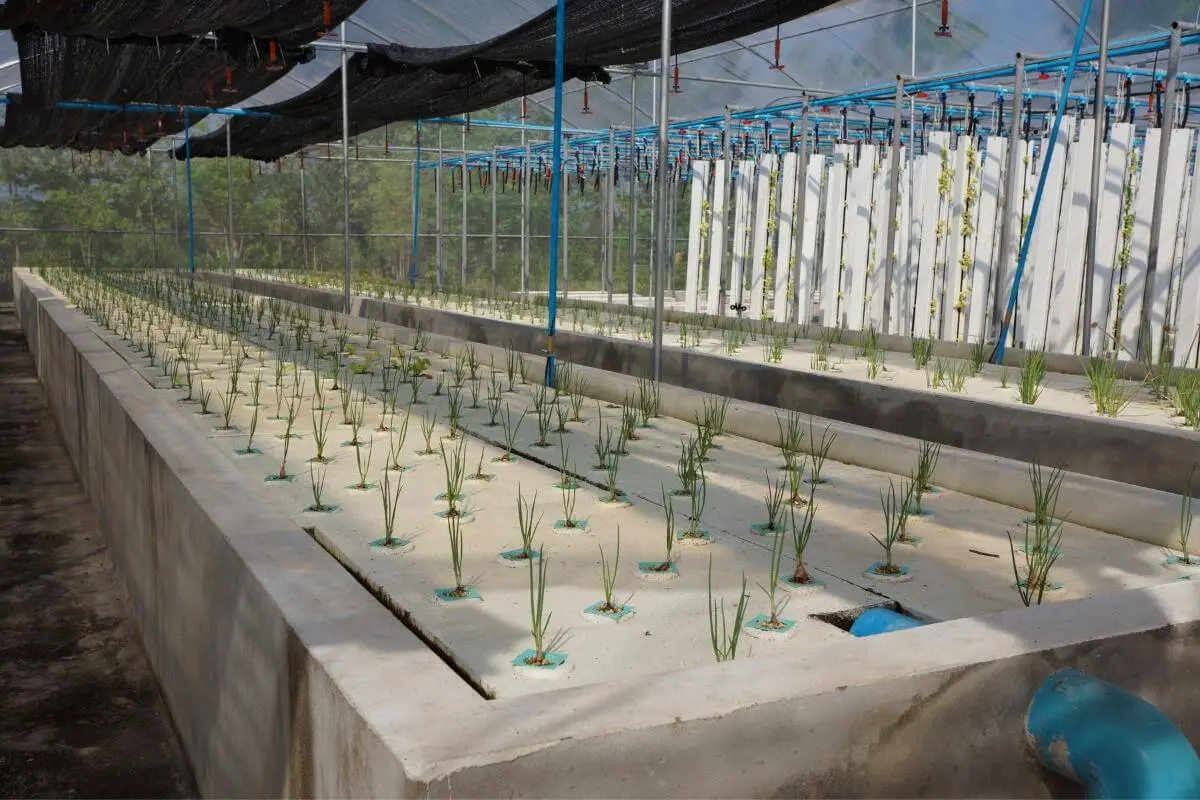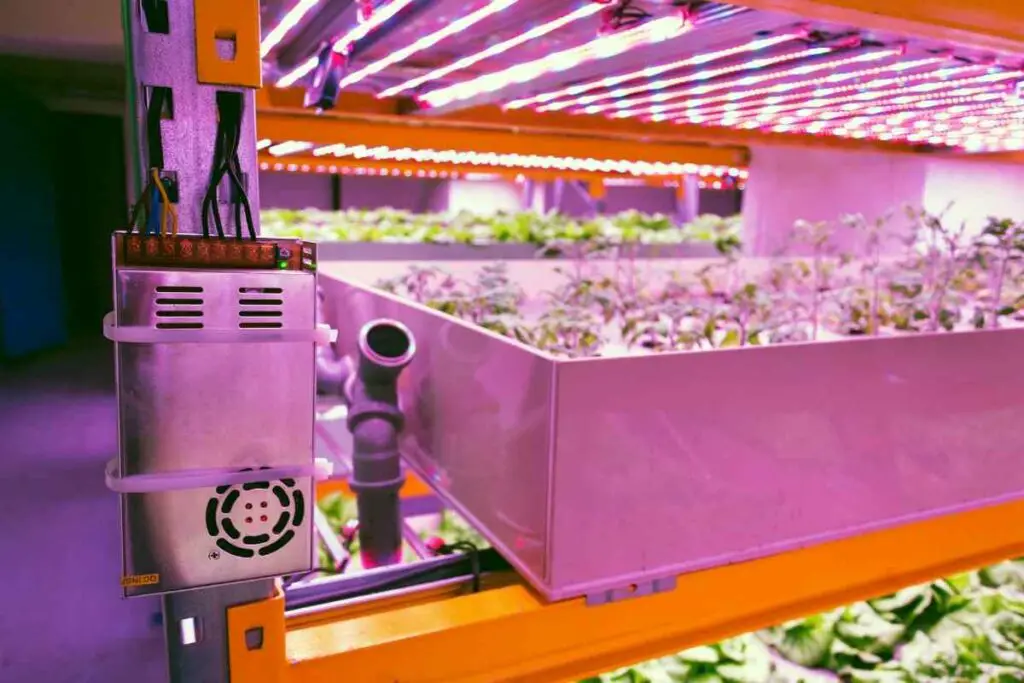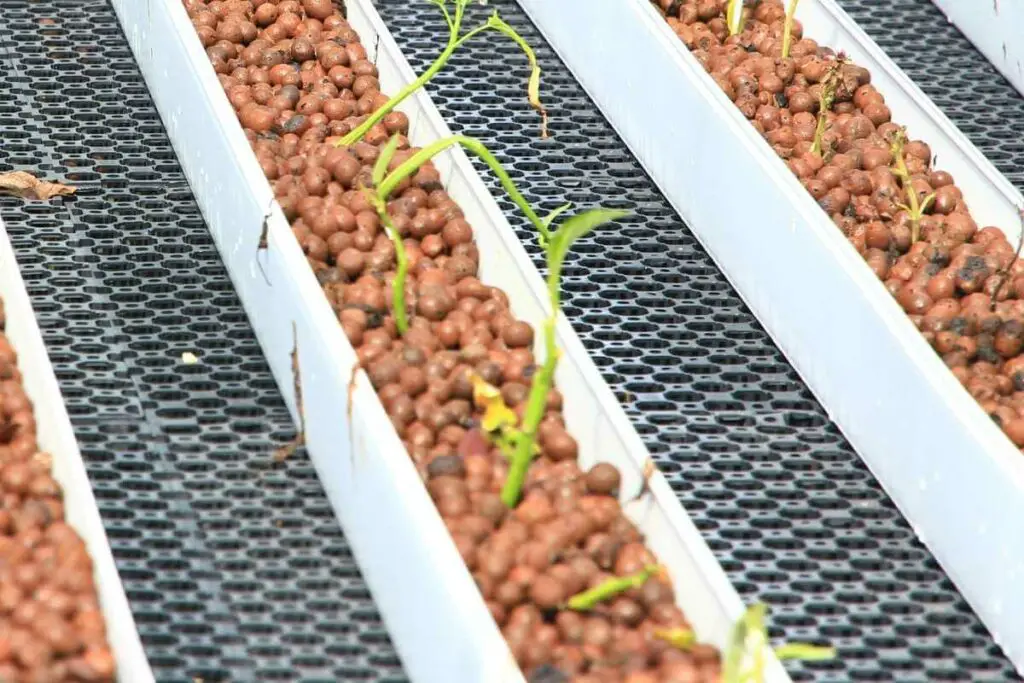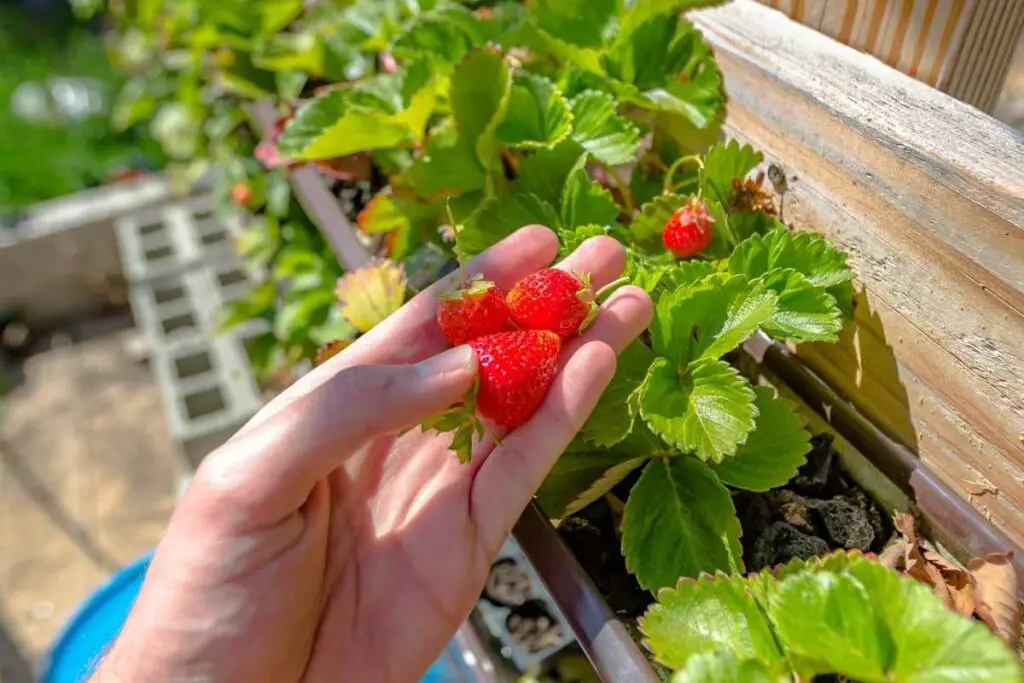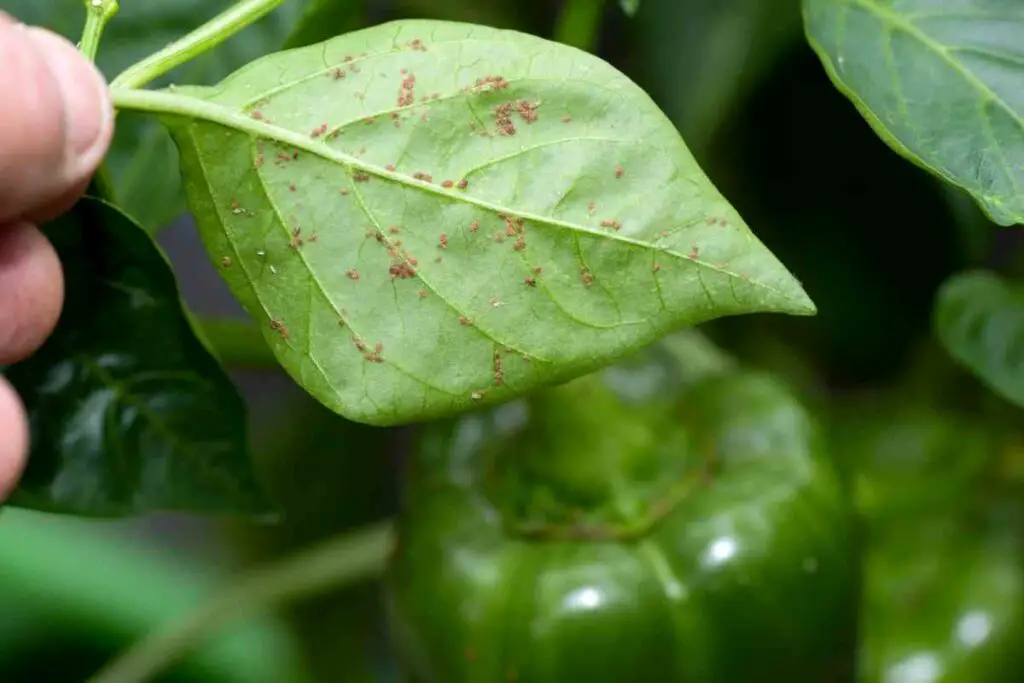Aquaponics has revolutionized agriculture by enabling farmers and hobbyists to grow plants without soil.
Such arrangements only need fish, good bacteria and plants, and you will have your yields in no time.
There are three primary aquaponics types:
- media-based
- nutrient film technique (NFT)
- deep water culture (DWC)
In this article, we will compare the NFT and DWC methods, their pros, cons and come up with a verdict on the better method overall.
What Is an NFT Aquaponics System?
The NFT technique entails the growth of plants on horizontal pipes, where shallow and slow-flowing nutrient-rich water provides nutrients to the plants.
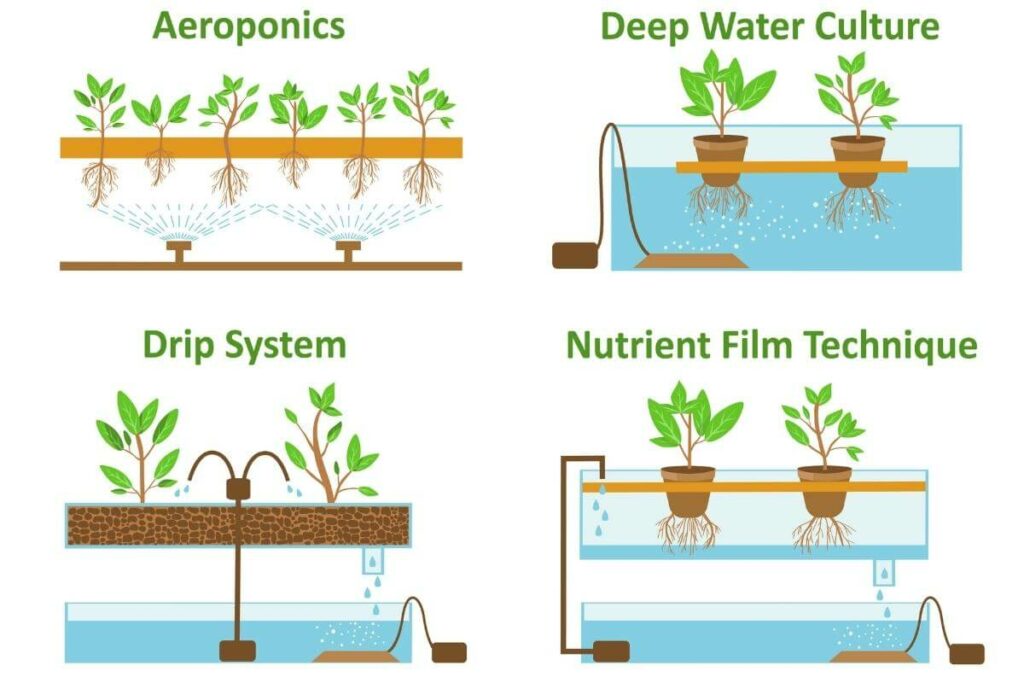
The pipes, commonly made of PVC, have holes/gaps on top.
This is where the seedling is placed so that it can anchor its roots in the water and the shoot can bloom outside the pipe.
The components of an NFT system include:
- the fish tank
- pump
- mechanical and biofilter
- grow pipes
You feed the fish in the tank, and they release their waste in there.
The pump pushes the waste-rich water through the mechanical filter to remove food remains and other debris, and then the water enters the biofilter.
In the biofilter, the nitrifying bacteria converts the fish waste into plant nutrients such as nitrates.
The nutrient-rich water then flows in a shallow film in the grow pipes, rejuvenating the plants and boosting their growth.
Remember This: Net pots and growth mediums such as clay and pebbles support the plants inside the holes to avoid being swept away by the stream of water.
NFT Aquaponics System Pros and Cons
The NFT method has both benefits and drawbacks, which should influence your decision to choose or forgo the method.
Pros
- The roots in the NFT system have an adequate supply of oxygen because air circulates smoothly through the holes in the grow pipe.
- The holes in the pipes make it easy to check or notice signs of disease on the roots
- Water flows consistently, thus sweeping off any solids trapped in the root system. This ensures the roots get adequate nutrients from the water without any hindrance.
- The flowing water inhibits the growth of fungal pathogens that cause plant diseases.
- This system does not require a lot of water to run.
Cons
- NFT supports a limited kind of plants. You cannot grow large plants with extensive roots.
- Power outage or pump failure can disrupt the growth process because the water will not flow.
- Root clogging is a significant problem in the NFT system, especially if you don’t choose the correct size/diameter of grow pipes.
- Establishing an NFT system is expensive.
- The shallow water film flowing through the grow pipes cools down or heats up fast, making temperature control in this system challenging.
What Is a DWC Aquaponics System?
The deep water culture system(DWC) is also referred to as the raft system of aquaponics.
It is a floating aquaponics system that suspends the plants such that the roots are submerged in the water containing fish and good bacteria.
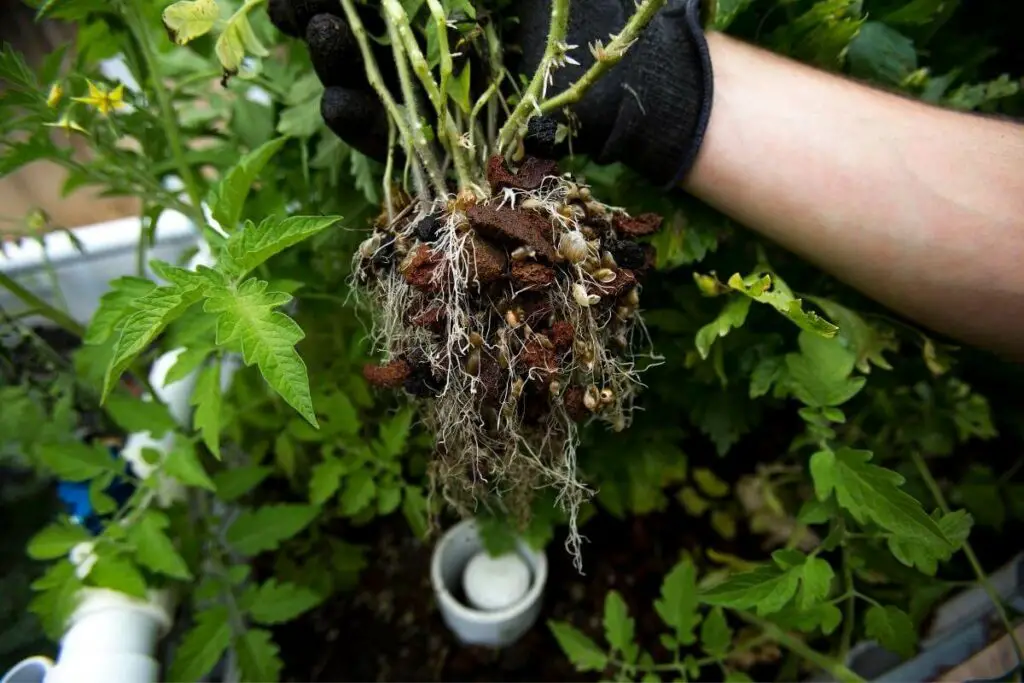
The floating rafts are made from polystyrene or foam board and have holes through which the plants access the nutrients and bloom.
The DWC system components include the:
- fish tank
- grow canals
- floating rafts
- pump
- bio filter
- mechanical filter
- aeration equipment
The fish grow in the water tank and release their waste into the water.
The pump forces the water through the biofilters and mechanical filters into the grow canals.
Inside the grow canals, the hanging roots absorb nutrients and oxygen.
The DWC is not well-aerated, so you will need to add oxygenated air with the aeration equipment.
The water is recycled again into the fish tank, and the process repeats.
DWC Aquaponics System Pros and Cons
DWC is one of the widely-used aquaponics systems, but it has its benefits and drawbacks.
Pros
- Putting up the DWC is easy and inexpensive, making it amateur-friendly.
- The productivity of plants is high in this system due to the ample space, adequate nutrients, and oxygen.
- The water in this system flows in large volumes, making it easy to control its temperature.
- DWC sustains relatively larger plants due to the ample growth space and freely hanging root system.
- The raft system can be reused after a harvest, making DWC suitable for large-scale commercial farming.
- Easy to clean and maintain.
Cons
- The large volumes of water and space can be breeding hubs for mosquitoes and need constant mitigation techniques.
- The floating rafts limit air circulation creating the need to introduce oxygen into the water through aeration methods to prevent root rot.
- Rearing herbivorous fish in the DWC system is challenging because they will eat the free-hanging roots.
Nft Vs Dwc Aquaponics: Which Is Better?
The nft vs dwc aquaponics debate has been long-standing since the rise of hobbyist and commercial aquaponic farming, as both methods have varying benefits and drawbacks.

Deep water culture is more popular than the nutrient film technique due to its simplicity and productivity rate.
In commercial setups where the farming is for profit, putting up the NFT system does not make financial sense in the long run.
Deep water culture also requires minimum maintenance, unlike NFT that demands constant monitoring, power back-up, pump maintenance, etc.
Nutrient deficiency in aquaponics is a significant challenge. The shallow water film in the NFT system makes the plants more vulnerable to nutrient deficiency.
However, in the DWC system, large volumes of nutrient-rich water provide adequate nutrients.
This adds another point to why large-scale aquaponics projects prefer the system to NFT.
Final Verdict
Both Nft and Dwc are aquaponics systems that contribute to better food security and sustainable agriculture.
They both present advantages and disadvantages, and the choice is yours depending on your farming goals, budget and preferences.
However, our verdict is that the deep water culture system(DWC) is better than the NFT on so many counts.
It is easy to set up, beginner-friendly, cost-effective, and does not require a lot of monitoring.
Furthermore, you can grow a wide variety of plants on this system, unlike NFT that is restricted to plants with small, non-fibrous roots.
Whether you want to grow medium-sized vegetables, flowers or fruits, the DWC is suitable for domestic and commercial aquaponics.
